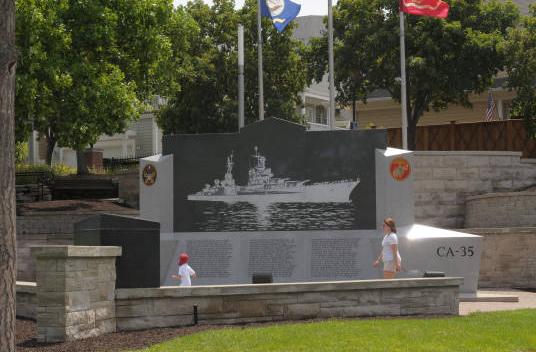In 1930, construction began on a new heavy cruiser for the U.S. Navy. It was the second of four Navy vessels to be named the . The cruiser was officially commissioned into active service on November 15, 1932. By November of the next year, the cruiser began its eight years of service as the flagship for Scouting Force 1.

In 1945, the ship carried vital components for the atomic bomb, nicknamed “Little Boy,” which was dropped on Hiroshima. Four days after delivering these components, while sailing from Guam to Leyte, the cruiser was struck by torpedoes from a Japanese submarine causing it to sink. Of the 1,195-member crew, only 316 sailors survived the tragedy. The incident remains “one of the worst—and most controversial—tragedies in U.S. Navy history”.
Survivors of the USS Indianapolis worked over the next several decades to raise the money to erect a memorial in honor of the cruiser and its missing crew. A father-and-son team of Indiana-based architects, Frank and Joseph Fischer, designed the USS Indianapolis Memorial, which was dedicated to the 50th anniversary of the tragedy in August 1995.
Located on the Canal Walk between Senate Avenue and Walnut Street (see ), the Fischers designed the memorial in the shape of a cruiser. It is composed of black and gray granite. The names of the cruiser’s company appear on one side. An image of the USS Indianapolis appears on the opposite side. Along its base, the memorial tells the story of the sinking of the cruiser.

Help improve this entry
Contribute information, offer corrections, suggest images.
You can also recommend new entries related to this topic.